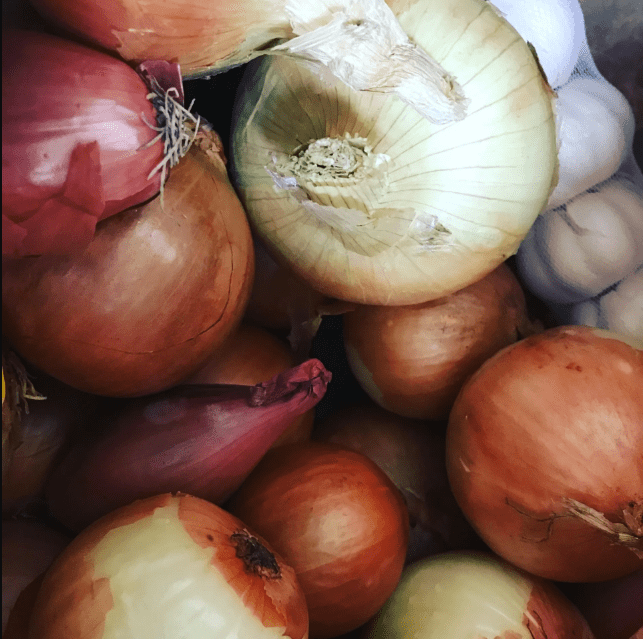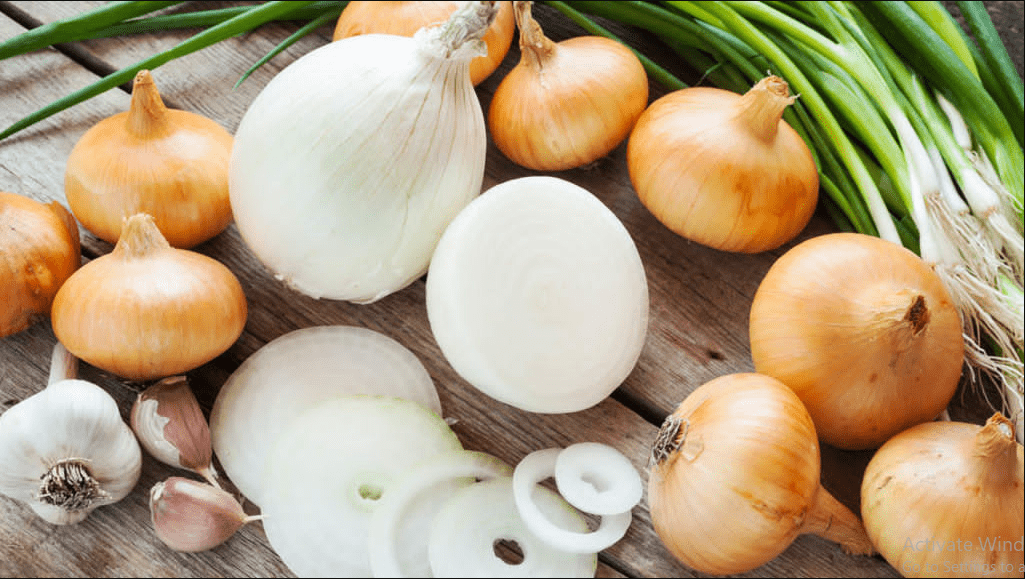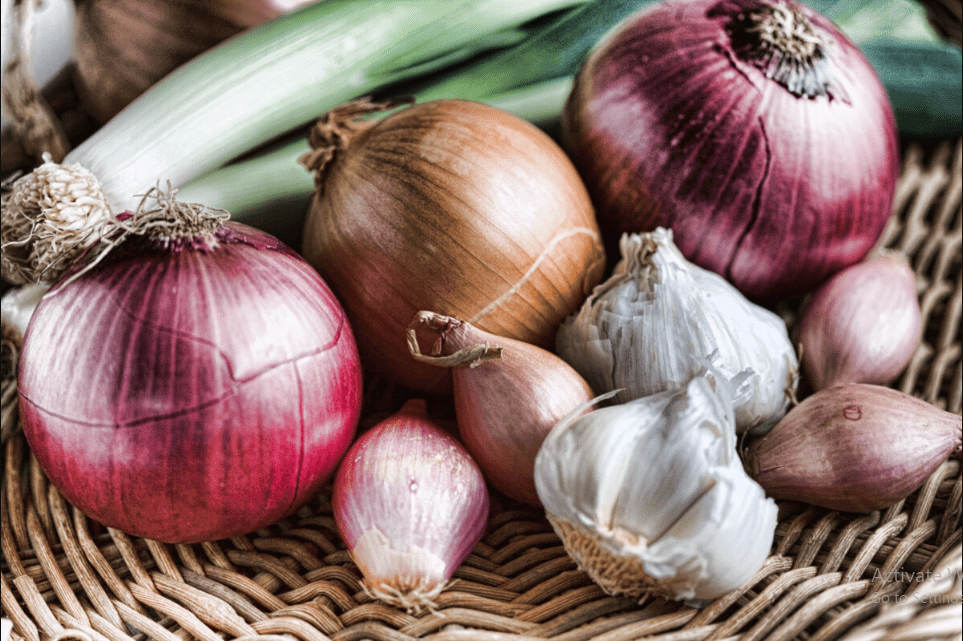Research into the world of botanical families often uncovers complex relationships among plant species. In such a pursuit of explanation, one may ask, “Is garlic a nightshade?” Understanding the complex botanical backdrop upon which garlic has been identified could shed much-needed light upon this perennial question. Does one find the answer in this?
Nightshade Family Plants
Plants from the Nightshade family are botanically known as Solanaceae-a varied phttps://houseofplants.biz.id/lant group with similar characteristics. The most common nightshades are tomatoes, potatoes, bell peppers, and eggplants. Many plants belonging to the nightshade family have flowers that are in a bell shape, while some plants belonging to the nightshade family produce alkaloids such as capsaicin or solanine.
The vegetables included in the Nightshade family are extensively used in nutrition and play a significant role in agriculture. The majority of Nightshade species are ingested all over the world; however, some individuals may experience sensitivities to certain elements of these plants. The knowledge of botanical properties and possible impacts of the Nightshade vegetables might be very important for people with some eating problems or health conditions.
The botany of the Nightshade family contains some very intricate relationships among members, nutrient content, and the issue of plant consumption versus human health. Additionally, gaining an understanding of such subtlety may bring general knowledge regarding plant biology as well as food and culinary aspects. Knowledge of what distinguishes the different plants that bear the Nightshade label can help in making informed decisions about their consumption and effects on personal health.

Botanical Identify of Garlic
Garlic belongs to the genus Allium and the family Amaryllidaceae. The vegetables in the genus Allium are a class of vegetables that contain a number of characteristic features. To begin with, they have a strong pungency and a smell that is typically sulfuric. This distinguishes them from the nightshade vegetables both in appearance and taste.
Some key facts about garlic with regard to its botanical identity are as follows:
- Allium group: Garlic belongs to the genus Allium, together with onions, leeks, and chives.
- Unique traits: Most Allium vegetables are characterized by pungency and therapeutic values, besides antioxidant activities.
- Nightshade relationship: Garlic is not a nightshade, although it often shares some cooking purposes with true nightshades since the plants are in the Allium family.
Put differently, while the categorization of foods may somewhat relate garlic to nightshades, their botanical definitions are a whole different matter. An understanding of such botanical differences is important, whether it applies to one’s adherence to specific diets or even to the curiosity of various plant families and their uses.
Garlic: Allium Classification
Garlic, scientifically known as Allium sativum, falls under the category of plants that make up the genus of Allium, which includes vegetables like onions, leeks, and chives. These vegetables belonging to the Allium genus have a highly distinctive aroma and strong flavors, thus being very common in many cuisines.
Within the genus Allium, garlic is singular because it is a bulb with several segments, or cloves, protected with a papery membrane. These cloves form the major edible parts of the vegetable and possess essential nutrition as well as health-promoting phytochemicals.
Which naturally leads to the very important point that garlic is not a nightshade-the tomato, the potato, the bell pepper-all those are nightshades, being in a different botanical order altogether, the order Solanaceae, from garlic’s Allium family.
By categorizing garlic appropriately as a vegetable in the Allium class, consumers are in a position to apply this herb in the context of healthy lifestyle dietary options. Because of its distinctive taste and potential medical benefits, garlic has remained one of the staple ingredients in most cuisines globally.
Special Characteristics of Allium Vegetables
Among all varieties, garlic is one of the vegetables from the Allium family that possess some distinctive features that make it stand out in the world of food. Their distinctive smell and strong taste have made them shine in many kinds of food. Allium vegetables possess health-enhancing properties because of their sulfur compounds, which provide a number of possible health benefits.
Moreover, Allium vegetables are also anticipated to be very commendable in culinary practices, adding flavor and complexity to dishes from various cuisines. For more on this aspect, garlic is considered to give more flavor to the dishes related to savory food due to which it has gained great attention among people all over the world. Not only this, but such vegetables are known for possessing antioxidant and anti-inflammatory potential, adding to their nutritional properties.
More so, Allium vegetables have a wide application in the culinary world: from being consumed raw in salads to cooked use in soups, stir-fries, and sauces. In view of their adaptability to most forms of cooking, importance in the culinary world, and widespread popularity, there is no vegetable more worthy of interest than this one. Besides, these vegetables are said to give certain health benefits, which therefore make them a part of a healthy diet.

Is Garlic a Nightshade?
Garlic is not a nightshade family as some people would claim, together with tomatoes, potatoes, and bell peppers. From a botanical standpoint, garlic is classified under the genus Allium and therefore not a nightshade plant. Vegetables of the Allium family, like garlic, onions, and leeks, have different distinguishing characteristics compared to the nightshade vegetables regarding taste, appearance, and growth patterns.
Where nightshades and Allium vegetables share commonalities in being active components in cooking, they differ so much in the scale of their chemical composition, which affects flavor and health properties. Garlic, for one, has sulfur compounds with a pungent aroma that are possibly beneficial to health. Nightshades contain alkaloids linked with food sensitivities in some people. Knowledge of these plant differences needs to be acquired by consumers who are interested in educated dietary decisions.
Individuals who may be concerned about possible sensitivities or dietary restrictions related to nightshades should, therefore, realize that garlic is excluded from this class of plants. Comprehension of the type of classification that garlic falls into, within its genus of Allium, will be a great way to enable good choices concerning the inclusion of these flavors into one’s diet without confusion regarding its status as a nightshade.
Impact of Consumption of Garlic
The various ways in which garlic consumption affects health reflect its positive and negative effects. A brief idea about such effects will enable people to make better choices about their diet. The major impacts of garlic consumption include the following:
- Cardiovascular Health: Garlic is said to be good for the heart because it reduces blood pressure and levels of cholesterol.
- Antibacterial Effects: Garlic possesses antibacterial action against several types of infections.
- Anti-Inflammatory Effects: Garlic consumption can help reduce the level of inflammation within the body, therefore acting in the interest of general health.
- Digestive Health: Garlic consumption can support digestion for the sake of gut health.
These effects are multifaceted in relation to the integration of garlic into the diet. Although garlic is reputed worldwide for its might regarding food matters, its consumption also plays a role in various aspects touching on general health.
Addressing Misconceptions
Garlic is wrongly classified to the category of nightshades due to the usual culinary contexts that both may fall under, hence muddling up its botanical identity. Garlic is related to all the vegetables that have the name Allium prefixed or suffixed to them and is quite far from tomatoes and bell peppers taxonomically, even though these are popularly thought to be other varieties of garlic. This seems to be a myth from putting all vegetables which burn into one category.
The common myth is that garlic elicits a nightshade allergic reaction, but this has no basis in fact. Allium vegetables are representative of a set of unique chemicals that are separate from those in the nightshades, and the assumption of cross-reactivity is unfounded. It’s important to know the botanical difference between plants from the Allium family and nightshade plants as a way to understand misconceptions about the nature of these vegetables and where garlic fits.
By addressing these fallacies, the consumer can better their dietary decision when it comes to incorporating garlic into their diet. Understanding the true botanical nature of garlic dispels many misconceptions maintained by some regarding garlic’s claims of being a nightshade. The person will be well informed, therefore, to enjoy the culinary and health benefits of garlic with no overt misgivings about its real classification as a nightshade.
Making Useful Food Decisions about Garlic
- Organic variety: Organic garlic should be used because this diminishes pesticide exposure and organic food is superior in quality.
- Storage tips: Garlic should be kept in a cool, dry place away from direct sunlight to preserve flavor and extend shelf life.
- Avoid overcooking: This leads to the destruction of the health benefits of garlic due to loss of nutrition with excessive heat.
By following these practical tips, the consumer can maximize the use of garlic by enjoying all the benefits that come with it.

Conclusion: The Position of Garlic in the Nightshade Debate
While the question of whether garlic is a nightshade in any sense has interested scholars and consumers alike, garlic is simply not part of the Solanaceae family that tomatoes and potatoes are a part of; however, the botanical classification in the genus Allium makes it a bit of an oddity altogether. With the various chemicals inside garlic and its unique set of properties, it is a healthy thing for one to eat on many different levels and invaluable in both gastronomic and medical contexts.
Despite misinformed myths regarding the nightshade relationship, garlic is consumed in many cuisines worldwide. Its multiple uses and robust flavor profile place garlic not only as a staple among chefs but also among home cooks. Understanding which foods belong to which plant families helps consumer gain insight into specific dietary choices and health-related potential consequences of those choices.
It is duty-bound, however, upon one to identify that garlic, though not classified as a nightshade plant, does have a history and nutritional value in both the culinary and alternative medicinal worlds. Dispelling a myth that places garlic within the nightshade debate gives way to confidence in adding this pungent bulb to one’s meal without questioning its association with the Solanaceae family. By embracing the distinctive qualities of garlic, the diversity and flavor in dishes are augmented, along with encouraging a holistic approach toward well-being.
The debate still rages as to whether garlic is classified as a nightshade plant. While not belonging to the family of Solanaceae, its unique properties may make it classify in its category among people who are sensitive to various plant groups. Knowing the botanical classification of garlic may help consumers make informed dietary choices.